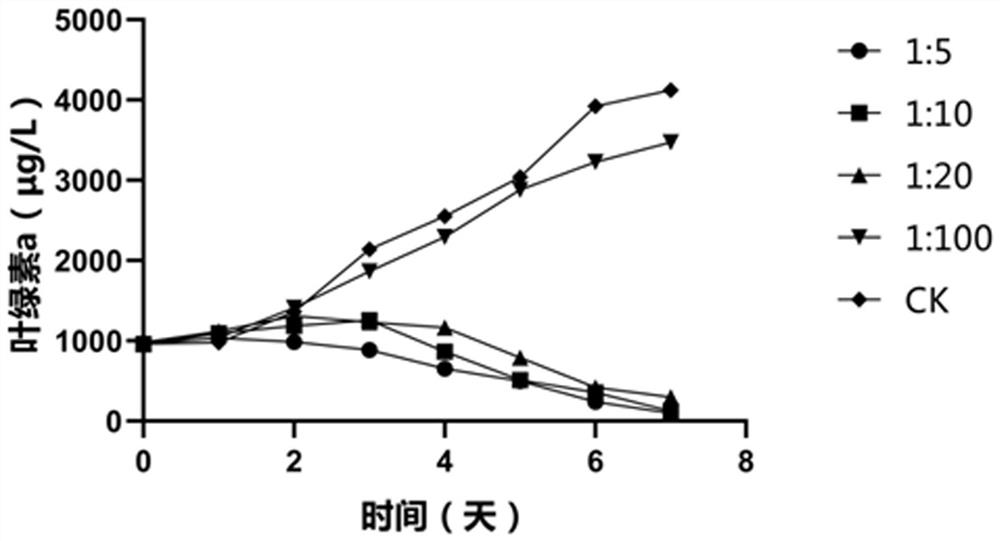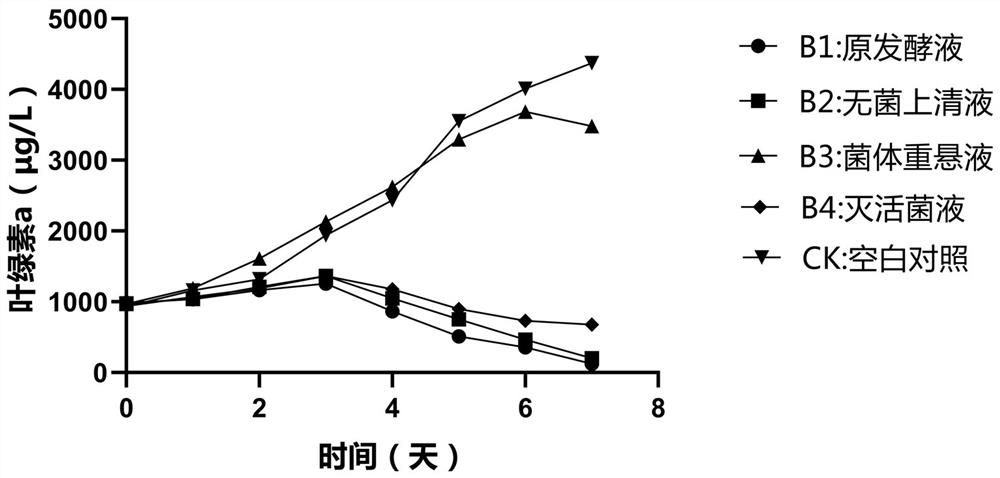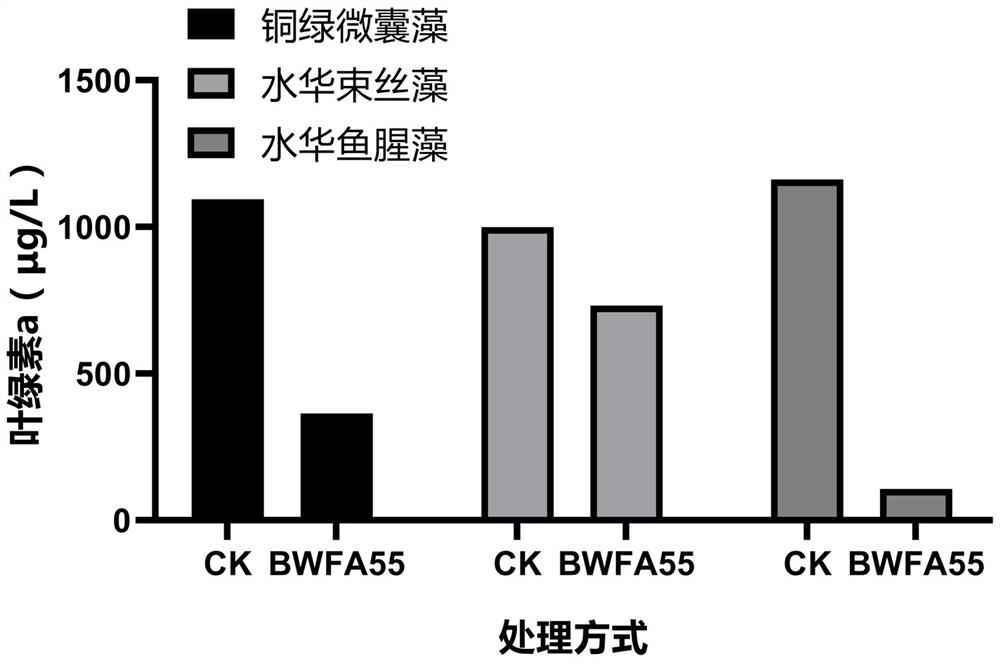Bacillus licheniformis and application thereof
A technology of Bacillus licheniformis and bacterial agent, which is applied in the field of microorganisms to achieve the effect of effective control of cyanobacteria blooms
- Summary
- Abstract
- Description
- Claims
- Application Information
AI Technical Summary
Problems solved by technology
Method used
Image
Examples
Embodiment 1
[0062] In this example, 100 mL of fresh Anabaena bloom liquid was treated, the concentration of chlorophyll a was 959.70±48.23 μg / L, and the pH value was 7.0. The steps of specific examples are as follows: firstly, Bacillus licheniformis BWFA55 was cultivated to the logarithmic phase (24 h) at a temperature of 30 °C and a shaker speed of 150 r / min, and then 1 Inoculate the algae liquid with mL logarithmic phase bacterial liquid, use sterile water as blank control, take a sample to determine the initial chlorophyll a concentration is 961.96±57.43 μg / L, place at 28 ℃, light intensity 2500 lux, light cycle 12 h:12 h in a light incubator for static culture, and samples were taken every 24 h to determine the concentration of chlorophyll a. The concentration of chlorophyll a in the algal liquid treated by the above method was 3472.59±116.71 μg / L at 168 hours, and the concentration of chlorophyll a in the CK group was 4124.56±179.38 μg / L, and the algae inhibition rate was 15.62±6.48%...
Embodiment 2
[0064] The difference between this example and Example 1 lies in that the concentration of chlorophyll a in the treated Anabaena liquid is different, and the ratio of bacteria and algae is different. In this example, 100 mL of fresh Anabaena bloom liquid was treated, the concentration of chlorophyll a was 953.24±49.76 μg / L, and the pH value was 7.0. The steps of specific examples are as follows: firstly, Bacillus licheniformis BWFA55 was cultivated to the logarithmic phase (24 h) at a temperature of 30 °C and a shaker rotation speed of 150 r / min, and then the bacteria-algae ratio was 1:20, and the 5 mL of logarithmic phase bacterial liquid was inoculated into the algae liquid, and sterile water was used as a blank control. The initial chlorophyll a concentration was determined to be 961.96±57.43 μg / L by sampling. Placed at 28°C, light intensity 2500 lux, and light cycle for 12 h: The 12-h light incubator was cultured statically, and samples were taken every 24 h to determine t...
Embodiment 3
[0066] This example differs from Example 1 and Example 2 in that the concentration of chlorophyll a in the treated anabaena liquid is different, and the ratio of bacteria and algae to bacteria is different. In this example, 100 mL of fresh Anabaena bloom liquid was treated, the concentration of chlorophyll a was 955.28±36.00 μg / L, and the pH value was 7.0. The steps of the specific example are as follows: firstly, Bacillus licheniformis BWFA55 was cultivated to the logarithmic phase (24 h) at a temperature of 30 °C and a shaker rotation speed of 150 r / min, and then the bacteria-algae ratio was 1:10, and the 10 mL of logarithmic phase bacterial liquid was inoculated into the algae liquid, and sterile water was used as a blank control. The initial chlorophyll a concentration was determined to be 961.96±57.43 μg / L by sampling, placed at 28 °C, light intensity 2500 lux, and light cycle for 12 h: The 12-h light incubator was cultured statically, and samples were taken every 24 h to...
PUM
 Login to View More
Login to View More Abstract
Description
Claims
Application Information
 Login to View More
Login to View More - R&D
- Intellectual Property
- Life Sciences
- Materials
- Tech Scout
- Unparalleled Data Quality
- Higher Quality Content
- 60% Fewer Hallucinations
Browse by: Latest US Patents, China's latest patents, Technical Efficacy Thesaurus, Application Domain, Technology Topic, Popular Technical Reports.
© 2025 PatSnap. All rights reserved.Legal|Privacy policy|Modern Slavery Act Transparency Statement|Sitemap|About US| Contact US: help@patsnap.com



